
You Don’t Need 50,000 Rounds—But You Do Need a Plan
We’ve all met that guy—the one with crates of surplus 7.62×39 stacked like Tetris blocks in his garage… but not a single case of water or a week’s worth of food in the pantry.
In the firearms and preparedness communities, there’s a common belief that more is always better. More ammo, more mags, more bulk deals. But is your stash really supporting your goals—or just collecting dust?
Whether you’re a weekend range shooter, a course junkie, or someone prepping for the next disaster scenario, the question comes up again and again:
How much ammo should I stockpile?
This guide breaks it down by use case and caliber—so you’re not just hoarding brass, but building a smart, intentional reserve that supports your training, self-defense, and long-term security.
The 3 Categories of Ammunition You Should Be Tracking
Before you start running the numbers, make sure you understand the why behind your stockpile. Ammo should be organized into three categories:
- Range Ammo – The stuff you burn through. Used for training classes, match prep, and range days.
- Ready Ammo – Loaded magazines and defensive loads staged in gear, vehicles, or safes. This is your grab-and-go reserve.
- SHTF Reserve – Deep storage. This is your long-term hedge against civil unrest, supply chain disruptions, or full-on grid collapse. You don’t touch it unless things truly go sideways.
Many shooters stop at range ammo and assume they’re “stockpiling.” They’re not.
Let’s run through how to structure your supply by caliber.
How Much 9mm Ammo Should You Stockpile?

Range Ammo
If you’re training seriously, expect to burn through 250–500 rounds per month. Advanced classes—like ECQC or handgun-specific tactical courses—can easily push past 1,000 rounds over a few days.
Ready Ammo
Plan on 6–10 loaded magazines per pistol—roughly 100–150 rounds per firearm. If your spouse or training partner carries too, double it.
Reserve Ammo
Aim for 5,000 rounds per person. This gives you enough to stay proficient long-term without dipping into training or ready ammo.
Tip: Subscribe to AmmoLand for daily deals on 9mm and all your other ammo needs!
Live Inventory Price Checker
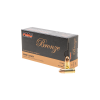
|
PMC Ammunition Bronze 9mm 115 GR FMJ Ammunition | Rainier Arms | $ 144.99 |
|
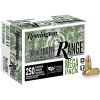
|
REMINGTON RANGE 9MM LUGER 115 GR FMJ AMMUNITION | Bereli | $ 219.00 |
|
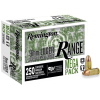
|
REMINGTON RANGE 9MM LUGER 115 GR FMJ AMMUNITION | Bereli | $ 120.00 |
|
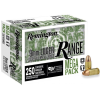
|
REMINGTON RANGE 9MM LUGER 115 GR FMJ AMMUNITION | Bereli | $ 66.25 |
|
How Much 5.56/.223 Ammo Should You Stockpile?
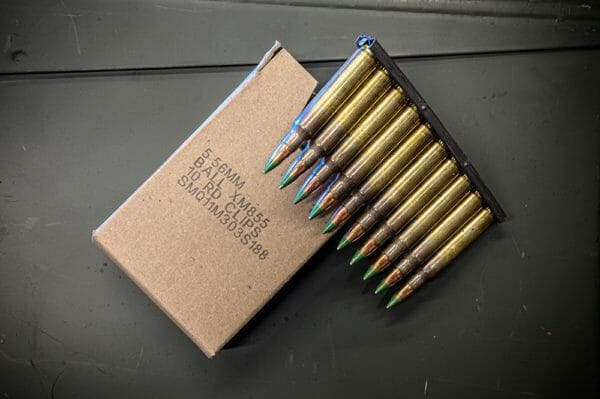
Range Ammo
Active rifle shooters can expect to run through 300–500 rounds per month. Add in tactical carbine courses or competitions, and that number grows.
Ready Ammo
A basic combat load is seven magazines (210 rounds). Add buffer room and go with ten loaded mags—300 rounds.
Reserve Ammo
At minimum, 5,000 rounds per shooter. If you’re planning for two or more people, scale accordingly.
Tip: Stick to brass-cased, quality ammo for storage. Even 55-grain FMJ will do work with a properly zeroed 20” barrel at extended distances.
How Much 12-Gauge Ammo Should You Stockpile?
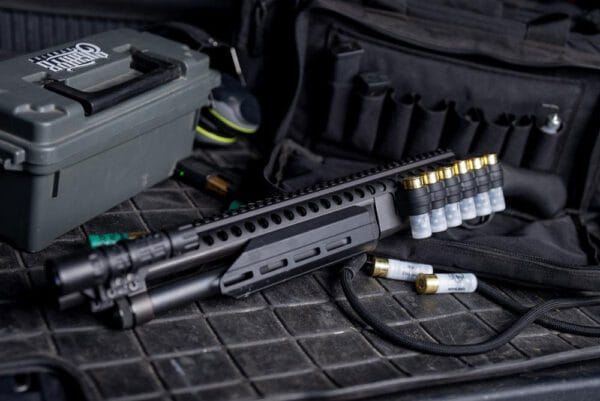
Range Ammo
Shotgun training is less common but no less important. Run 25–50 shells monthly, including buckshot and slugs.
Ready Ammo
Store 100–150 shells in shell cards, side saddles, or bandoliers, ready to go.
Reserve Ammo
Minimum of 250–500 shells, split between 00 buck and slugs. Consider how your shotgun is set up and its intended role.
Tip: Shotgun shells degrade faster than rifle or pistol ammo. Store them in a cool, dry location and rotate regularly.
What If You’re Just a Weekend Warrior?
Not everyone runs drills every weekend or signs up for high-round-count courses. If your goal is simply to have a solid reserve in case things get weird—like a prolonged ammo shortage or an emergency situation—here’s a more practical, low-commitment starting point.
For someone who doesn’t train regularly but wants to be ready:
- 5.56/.223: Keep around 2,300 rounds on hand. That breaks down to a full combat load of ready mags (about 300 rounds) and a reserve stash of 2,000 rounds.
- 9mm: Stock at least 1,650 rounds. This includes 150 rounds in loaded mags and gear, plus 1,500 rounds in deep storage for defensive use and periodic practice.
- 12-gauge: A solid base would be 400 shells total—150 shells staged and ready to go (buckshot and slugs), and a 250-shell reserve for long-term readiness.
Now, if you’re more serious about training and prepping long-term—maybe you’re running drills monthly, attending a few courses per year, or preparing for a more extended disruption—your numbers should look significantly higher:
- 5.56/.223: Upwards of 11,300 rounds makes sense. That covers 6,000 rounds for training throughout the year, 300 rounds ready in mags, and 5,000 rounds as a doomsday reserve.
- 9mm: You’ll want at least 11,150 rounds. This includes your yearly training supply, ready mags, and long-term reserve.
- 12-gauge: Somewhere around 1,250 shells will keep you covered—600 for range training, 150 ready for immediate access, and 500 tucked away for the future.
Final Thoughts
You don’t need 50,000 rounds unless you’re leading a fire team. However, you do need enough to stay trained up and proficient, defend your home, and weather the next panic-buying or supply disruption.
The key? Start with a plan. Divide your stock into range, ready, and reserve. Track your usage. Rotate. And above all, train regularly.
Because stockpiles don’t win fights. Well-trained shooters do.
About Scott Witner
Scott Witner is a former Marine Corps Infantryman with 2ndBn/8th Marines. He completed training in desert warfare at the Marine Air Ground Combat Center, Mountain Warfare and survival at the Mountain Warfare Training Center, the South Korean Mountain Warfare School in Pohang, and the Jungle Warfare school in the jungles of Okinawa, Japan. He now enjoys recreational shooting, trail running, hiking, functional fitness, and working on his truck. Scott resides in Northeastern Ohio.


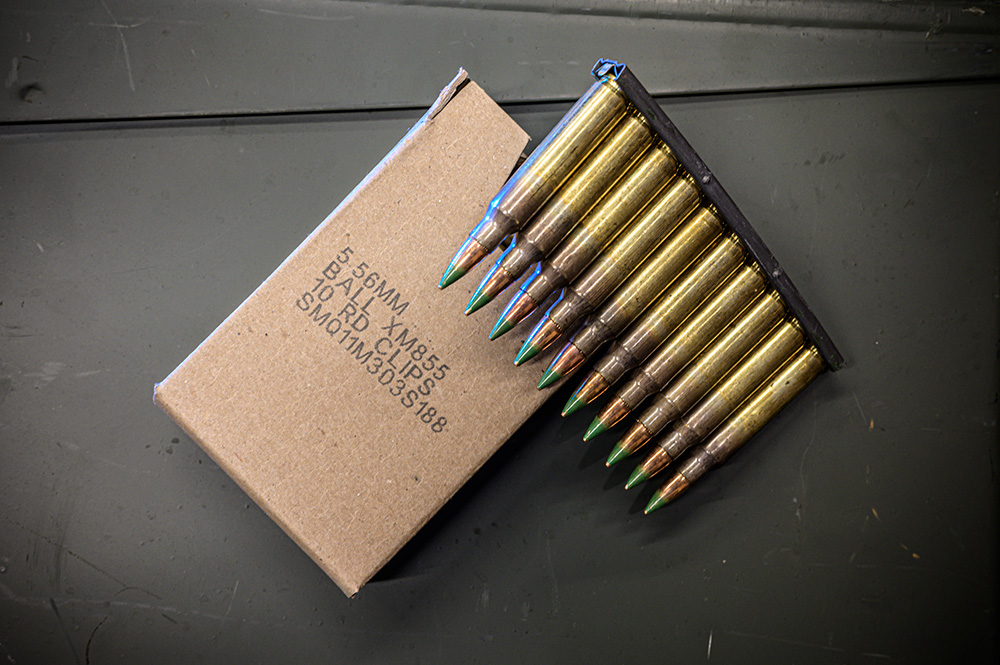

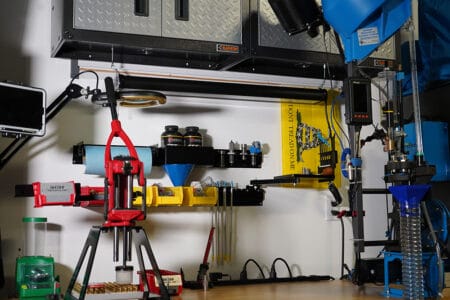


I shall rightfully be accused of cherry-picking the Bible to explain why so many Jews (and a fair number of gentiles) reject the notion of personal protection in favor of government provided security. The Book of Isaiah (2:4) tells the people to “bend your swords into plow shears and your spears into pruning hooks”, the hope being that after many years of war, we can at last turn our hearts and minds toward a lasting peace. However, this passage is speaking of a future where God shall judge and rule. It should be quite clear by now that such a… Read more »
I would double the round counts listed here. You will not have Uncle Sam resupplying you with ammo. You may not have time nor the market be able to resupply you for some time. What was not mentioned was magazines. The more the merrier. Food and water for a couple of weeks is a good idea. Our BASIC LOAD, before asking for more, was 720 rounds of 556, 2 belts for the pig (M-60), one claymore, two grenades, a law and a gas mask. This was back when our boots were black. No, I can’t carry that load now but… Read more »
Well, I have all those numbers beat but I didn’t see one suggestion that I think is vital to staying alive. Have stashes planted around you that you can get to if the SHTF. If they come for your guns and everything is in the safe or multiple safes but all of it is in your home, they hit the jackpot and all your ammo and guns are gone. Having a few AR’s and pistols planted here and there with your ammo would be beneficial if you are gone when they hit your house and kill your dog.
This article is just one man’s opinion. Base your range ammo needs on how frequently you practice, and buy at least a year in advance. As to READY and APOCALYPSE ammo… how many engagements could you be forced into? You want 7-10 full mags for each weapon for each incident. Knowing you won’t be able to buy more, but may run into battlefield pickups…
I think that a guy does need 50,000 rounds of ammo per AR, now that the Forced Reset Trigger is legal. But a guy will be trading a lot of that ammo away if he does not store up food and other logistics for each trigger puller.
My attention switch automatically turns to off when an article talks about go-bags or, in this case “your grab-and-go reserve.” Go where? How is that different than your “SHTF Reserve”? And why never touch the latter unless “things go sideways”? (An exception here for tracer, AP, etc. and ammo packaged for long term storage in harsh environments.) Unless urban dwellers have someplace to go and get out of town ahead of the storm, they’re not going anywhere when the SHTF. Suburban residents have a little more flexibility and the rural population are usually good where they are. Organize ammo by… Read more »
How much ammo? Yes and more
I reload now, ten calibers including pistol, rifle and carbine. I’ve carried over what I learned early on; you have enough target ammo on hand as you typically shoot in a year and 200 rounds of self defense ammo per caliber. I’ve stretched that a bit as I have pistol/rifle caliber firearms and there’s just so much diversity of shotgun rounds So, I have about 12k+ rounds of plinking ammo and 3500 rounds of self defense in three foot lockers, pistol, rifle, shotgun. You don’t have to put that all together at once, I certainly didn’t. But as $ allows… Read more »
“Reserve AmmoAt minimum, 5,000 rounds per shooter”
I am waaaay behind on stockpiling.
Every time I see some expert telling the public how much ammo we should ” stockpile ” it makes me laugh. First they make the assumption that if you’re stockpiling ammo you’re not packing enough water, food or other supplies. That’s not the case. Second they forget the trade value of ammo in a SHTF scenario. I stockpile not by person in my family but also those that will join me. The only limit anyone should have is the cost of purchasing and storage of ammo. Same with weapons. How many gun and what caliber should a person own? As… Read more »